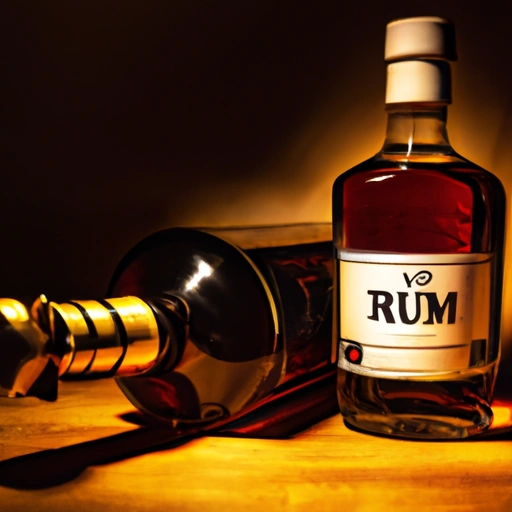Rum
Description

Rum is a distilled alcoholic beverage made from sugarcane byproducts, such as molasses, or directly from sugarcane juice. The process of fermentation and distillation yields a liquid that is then aged in oak barrels, imparting distinctive flavors, colors, and aromas. Rum's alcohol content is typically between 35% and 60% by volume, or 70 to 120 proof. In culinary contexts, rum is celebrated for its complex taste profile that can range from sweet and fruity to deep and smoky.
Common uses
Rum is widely used in both beverages and food dishes. In mixology, it serves as the base for many classic cocktails, such as Mojitos, Piña Coladas, and Daiquiris. In cuisine, it's often used to macerate fruit, flavor desserts, and to deglaze pans in savory dishes.
Nutritional value
Calories
1.5 oz (44 ml) of rum contains approximately 97 calories (American). 25 ml of rum, a common European measure, contains roughly 55 calories.
Protein
Rum contains no protein.
Fat
Rum contains no fat.
Carbohydrates
Rum typically contains no carbohydrates, although flavored and spiced rums may contain some.
Vitamins
Rum does not provide a significant amount of vitamins.
Minerals
Rum does not provide a significant amount of minerals.
Health benefits
While moderate consumption of alcoholic beverages like rum may have some health benefits, such as potential heart health improvements, it is important to consume alcohol responsibly and be aware of its risks.
Potential risks
Overconsumption of rum can lead to alcohol dependency, liver damage, and other health issues. It should be consumed in moderation, and not at all by certain populations such as pregnant women or individuals taking medication that interacts negatively with alcohol.
Common recipes
Rum is frequently used in baking for cakes, such as the traditional rum baba or rum-infused fruitcakes. It's also a common ingredient in desserts like rum balls and bananas foster.
Cooking methods
Rum can be used in cooking methods such as flambéing, where it's ignited to add a rich, caramelized flavor to dishes. It's also used in marinades to tenderize meat and impart flavor.
Pairing with other ingredients
Rum pairs well with tropical fruits like pineapple and coconut, as well as with chocolate, vanilla, and coffee flavors in desserts. In savory dishes, it complements the flavors of pork and seafood well.
Summary
Rum is a versatile and flavorful ingredient that can be used in a variety of sweet and savory dishes. Its rich history and diverse range make it popular in both cooking and mixology, with countless recipes utilizing its unique taste profile to enhance the overall flavor of the dish.